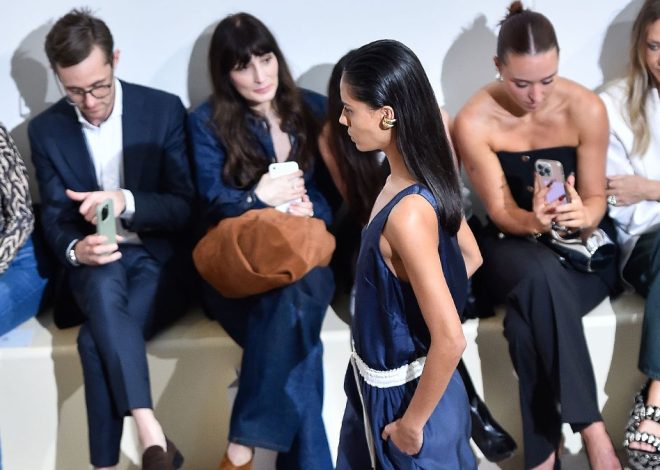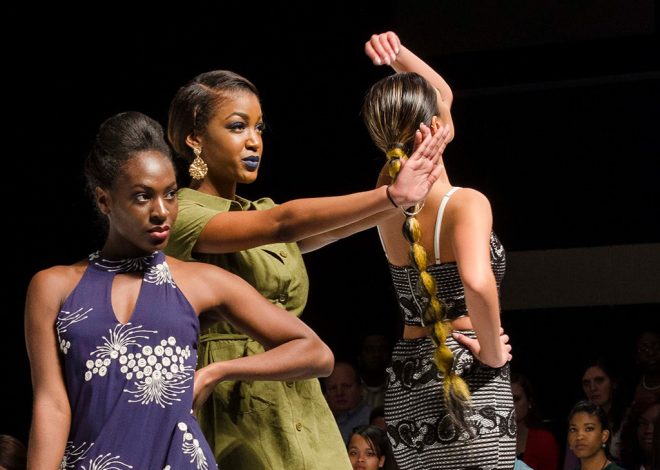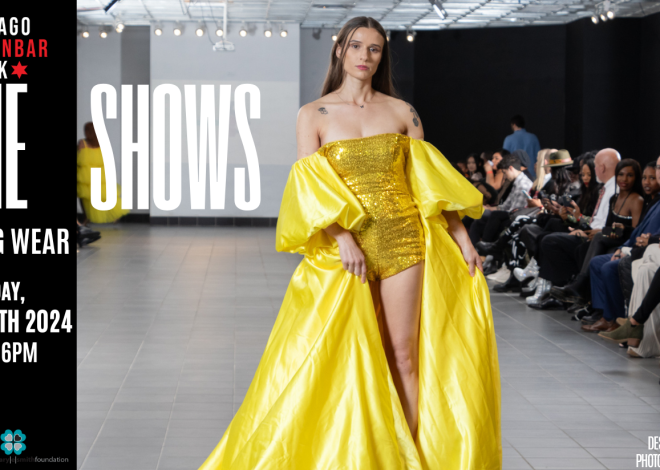Finally, a fashion brand makes aging aspirational
Can a fashion brand make aging cool?
If any designer can do it, it’s Phoebe Philo. The beloved Brit launched her eponymous brand Monday, and the 150 looks that debuted on a bare-bones website suggest that a high-fashion designer has finally articulated how wonderful, powerful and interesting it is to age.
Philo disappeared from fashion in late 2017, when she resigned from her post as the creative director of Celine. Her phantom presence has loomed over women’s wardrobes ever since.
Philophiles, as they are known, launched Instagram accounts and vintage sales celebrating “old Celine,” with its kooky tailoring (her trousers had a cult following) and dresses that mashed together 1930s modernism with instinctively contemporary feelings and details (she was the first to put Stan Smiths and Birkenstocks on the runways). Runway pieces that sold for exorbitant sums to begin with became even pricier collector’s items.
In the meantime, five years after she left, the runways still bear her imprint. Her former employees are now some of the industry’s top brass creative talents — Peter Do of his own label and Helmut Lang, Daniel Lee of Bottega Veneta and now Burberry, Matthieu Blazy of Bottega Veneta. And countless brands, from luxury labels like the Row, Co and Khaite to H&M’s upscale-mall offering Cos, bear her mark: sophisticated, pared back, slightly mischievous. Her aesthetic has been watered down over the past two years into “quiet luxury,” the preference for label-free basics over the cacophony of logo-crazy, maximalist fashion.
There was a sense that no one understood women as Philo did — the small pleasures and inconveniences of their lives, their needs as much as their desires. It was never a huge brand — compared with, say, Dior or Chanel — but it was influential beyond measure.
Her clothes, my colleague Robin Givhan wrote after Philo left Celine, “captured the imagination and loyalty of women who believed that Philo alone communicated with them in a manner that wasn’t condescending or bullying.”
It was elitist, yes — a look predicated on the subtle understanding of the few versus telegraphing values about your bank account, position of power or sexual confidence to whoever passed you on the street. And it was certainly expensive, meaning that as much as it spoke to women, it spoke to ones with a lot of money. (A clip resurfaced earlier this month of the supermodel Iman recalling that Philo resisted hiring Black models, which turned much of High Fashion Twitter against her.)
But when Philo announced she would launch an eponymous brand in July 2021, fans (phans?) went into a frenzy. Months passed without news. A September 2023 launch date came and went.
For shoppers, the anticipation and delays were as torturous as the rollout to Rihanna’s forever-forthcoming follow-up album to 2016’s “Anti.”
Monday, at last — as promised several weeks ago! — the brand launched, with the minimalist tailoring and freaky details familiar to any Philo fans.
Beneath the familiarity is a message that isn’t radical, per se, but is provocative: to be sophisticated — to be older — is a powerful thing. Aging is cool.
So little is known about Philo, who is 50; she keeps her private life exactly that. But it is hard not to see the trajectory of her work as autobiographical — not as sweeping statements about her life events, but in the small changes in our bodies and minds, and how we spend our time, as we grow.
When she was the creative director at Chloé — her first big designer gig — she was in her late 20s, and made the kinds of winky-sleazy party girl clothes that make you want to stay out all night.
At Celine, she was a mother, a career woman — a woman with many demands who is still insistent on time and respect for herself, her personhood. She — or the woman for whom she was designing — was no longer in nightclubs till 2 a.m., but in galleries at 10 a.m. Her inspirations were now figures like war photographer Lee Miller and Brassai’s graffiti images. She put Joan Didion in her ad campaigns, and dressed few if any celebrities (although the artist formerly known as Kanye West was a fan.)
Now Philo is in another era. Her new clothes — the first “edit” is called A1, and the second will be released in the spring — are more relaxed, more raw, and less trendy. They are dignified and refined, but far from monastic; there are trousers fronted with sprays of hand-combed ribbons, tops that look like pullover jackets with long asymmetrical tails, a shaggy asymmetrical skirt that drags on the floor and climbs to the mid-thigh, fantastic pleated pants (a Philo classic). The shapes are easy, forgiving, modest. Pants would hide a belly you don’t love and a slightly nipped blazer would make anyone look strong and elegant. But you can also unzip the legs of a pair of trousers all the way up the back, if you’re feeling (literally) cheeky. There is a $5,000 gold necklace that says “MUM.” The models are in their 40s and older, and their poses are sassy, composed — a little erotic.
Everything is shockingly expensive, even for a luxury label; the bags start at $3,500, the ribbon pants are $5,200, there is a $16,500 shearling coat. And speaking of labels, there are none. If anyone is going to know your rectangular tote is $8,500, it’s you, and probably you alone.
But, of course, the kind of woman who’d wear this stuff wouldn’t care about that. These clothes speak to someone who’s seasoned in life and on top of the world. She’s treating herself. She knows she’s worth it. She’s probably running a company or even started and sold one. These are clothes that, in a world that fetishizes youth and seems to chuck away women after 35, reveal that middle and late age are actually pretty great. You’ve got nonchalance, a bigger bank account (God willing), and you know enough that the only person you want to impress is yourself.
It’s what Vogue’s Sarah Mower once called “the mystique of the personal choice.” You trust your eye. You know your stuff. If one could turn back the clock and mix Schiaparelli’s art world slyness with Coco Chanel’s early career purity, you’d get this.
Author Linda Przybyszewski wrote in her 2014 book “The Lost Art of Dress” that couture in the early-20th-century golden age was designed for women older than 40. “Sophisticated dressing was for the woman who was old enough and responsible enough to earn or handle money, to have sex and to feed the children and run the household in which they all lived.”
You aspired to wear those clothes, and you worked toward making yourself cultivated and intelligent and worldly enough to wear them. Philo’s clothes, as modern as they look, seem to conjure that antique feeling of aspirationalism. These pieces will look fine on everyone, but amazing on anyone over 40. They’re so funky that they need personality and a total lack of self-consciousness to really come to life.
What does aspirational mean, anyway? These days, the idea has come to feel thin and flat; the familiar neutral mood board images that overtake your social media feed. It suggests you’ve met a commonly accepted slew of expectations — thin and thick in the right places, no lines on your face, working out everyday, doing your meal prep in aesthetically pleasing containers. Yikes, and yawn.
But aspiration is a much richer idea. It’s about seeing the image before you and finding something at once unfamiliar and desirable, and accepting the invitation. Most fashion is about appealing to the young, or making you feel like these clothes might make you feel young. Perhaps Philo’s finest idea is that her clothes, as her brand fact sheet states, are made in small quantities as a statement of sustainability — make just a few products, and make them really, really good, and they’ll last forever. If they’re beautiful and interesting, you don’t worry about whether they’re trendy. The sort of realization you come to with age.
In fact, trendy is a low and depressing concept. By manufacturing her clothes this way, and making them available online only — with no fashion show, wow! — Philo seems to suggest it’s all about you, and your relationship to the clothes.
Who knows what Philo’s intentions are, what her thinking is; she’s offered no quotes or news release, but instead a list of facts that’s as quotidian as a grocery list. “A1 comprises 150 styles.” “phoebephilo.com initially ships to the UK, Europe and the USA.” (This is not unusual; her press notes for her Celine shows were usually a slew of images, and in her later seasons she forwent the usual routine of backstage interviews.)
The trappings of the brand are almost mundane, and that seems to be the point, even the pleasure. It is a small antidote to the hugeness of luxury, which has become a dirty word over the past year, with brands churning out collections defined by an inoffensive smoothness.
Instead, Philo prizes the small and forgettable moments of your day. These aren’t clothes that solve big problems, but offer a bit of respect, and remind you that no matter your age, you have privacy, mystique and ruminations. The way the scarf of a leather bomber might swaddle your shoulders while you drop your kids off at school, and catch a ray of light between orangy fall leaves, is the poetry that makes your life something more than a daily grind.


